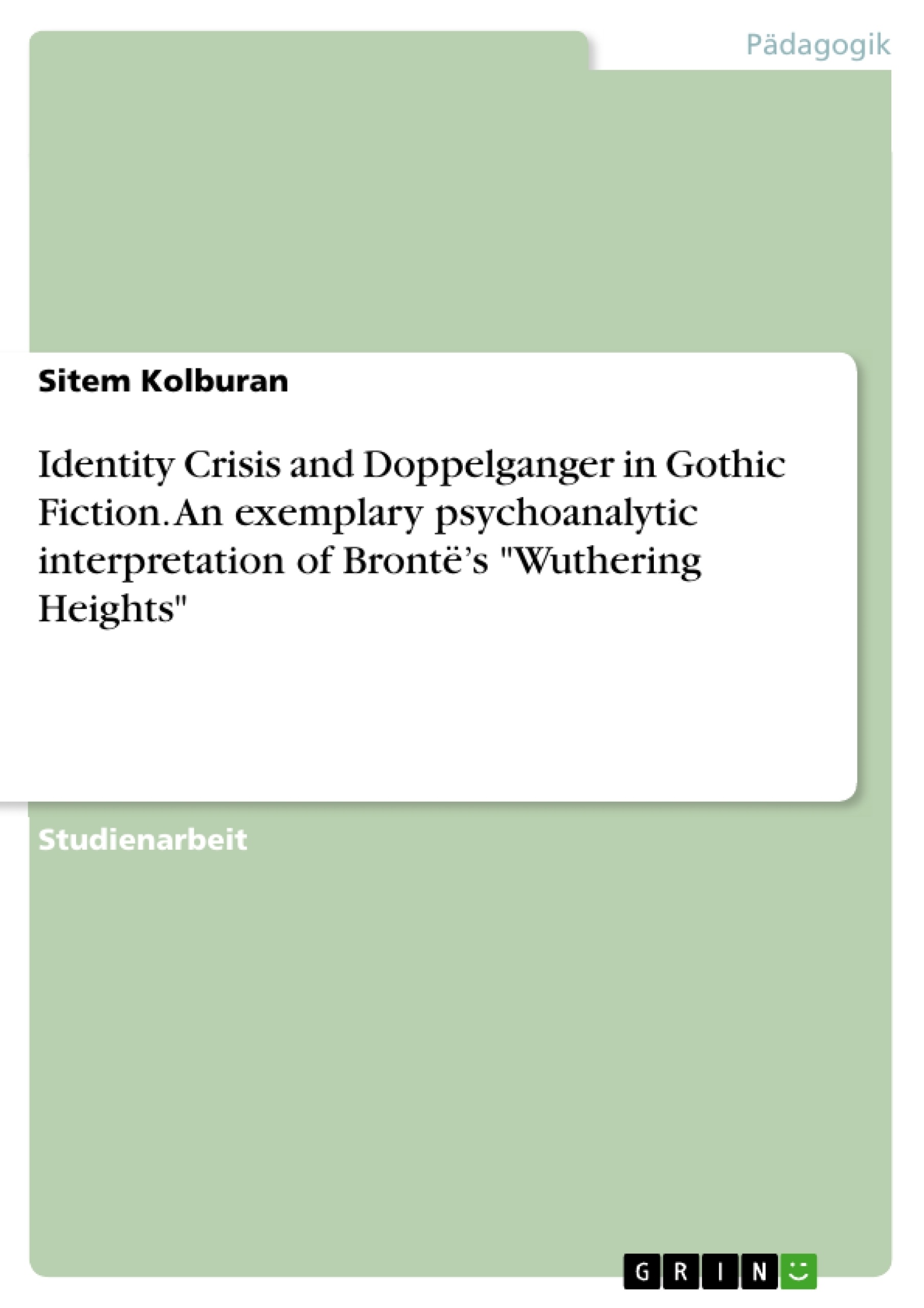This term paper deals with Brontë’s unique novel "Wuthering Heights", focusing on the protagonist Catherine Earnshaw and her fragmentarity. However, why does she even have a fragmentary identity and what are the consequences for her own self and as well as in terms of Gothic Fiction? Exactly this question is tried to be answered applying mainly the psychoanalytic approach by Lacan, Freud and Jung and using the hints given by the text’s symbolic value.
To fulfil a rational overview, the paper is structured in three main parts: First the conventional symbol of mirror and Lacan’s mirror stage will be analysed as a hint for Catherine’s problematic self.
Then the consequences of her crisis of identity will be examined applying the psychoanalytic theories by both Jung and Freud. Lastly, her split self will be analysed in context of Gothic Fiction in general.
Inhaltsverzeichnis
- Introduction
- Catherine's Crisis of Identity and Fragmentarity
- The Symbol of Mirror
- Lacan's Mirror Stage
- Transmission of Identity and Self-Splitting
- Heathcliff as Catherine's Shadow
- Heathcliff and Linton as Catherine's Id and Superego
- The Doppelganger in Gothic Fiction
- Conclusion
Zielsetzung und Themenschwerpunkte
Diese Seminararbeit analysiert Emily Brontës Roman "Wuthering Heights" mit besonderem Fokus auf die Protagonistin Catherine Earnshaw und ihre fragmentierte Identität. Der Text untersucht, warum Catherine eine zerrissene Identität hat und welche Folgen dies für sie selbst und für die gotische Literatur hat. Die Arbeit stützt sich dabei hauptsächlich auf psychoanalytische Ansätze von Lacan, Freud und Jung, und nutzt die symbolischen Hinweise des Romans.
- Catherines Identitätskrise und ihre Fragmentierung
- Das Symbol des Spiegels und Lacans Spiegelstadium
- Die Übertragung von Identität und die Spaltung des Selbst
- Der Doppelgänger in der gotischen Literatur
- Psychoanalytische Interpretation von "Wuthering Heights"
Zusammenfassung der Kapitel
Das erste Kapitel führt in die Thematik der Identitätskrise und der Symbolisierung im Werk Emily Brontës ein. Dabei wird auf die besondere Rolle des Spiegels als Symbol für Catherines fragmentierte Identität eingegangen. Das zweite Kapitel analysiert Catherines Identitätskrise im Lichte von Lacans Spiegelstadium. Es wird deutlich, wie Catherines Selbstbild durch ihre eigenen Spiegelungen beeinflusst wird und zu einer Spaltung ihres Selbst führt. Das dritte Kapitel befasst sich mit der Übertragung von Identität und der Spaltung des Selbst. Hier wird die Rolle von Heathcliff als Catherines Schatten und die Beziehung zwischen Heathcliff und Linton als Repräsentation von Catherines Id und Superego untersucht.
Schlüsselwörter
Diese Arbeit konzentriert sich auf die folgenden Schlüsselbegriffe: Identitätskrise, Fragmentierung, Symbol des Spiegels, Lacans Spiegelstadium, Doppelgänger, gotische Literatur, Psychoanalyse, Emily Brontë, "Wuthering Heights".
- Quote paper
- Sitem Kolburan (Author), 2011, Identity Crisis and Doppelganger in Gothic Fiction. An exemplary psychoanalytic interpretation of Brontë’s "Wuthering Heights", Munich, GRIN Verlag, https://www.grin.com/document/335568




